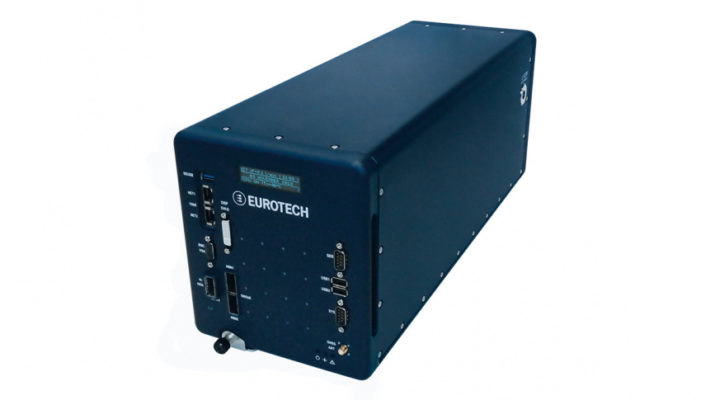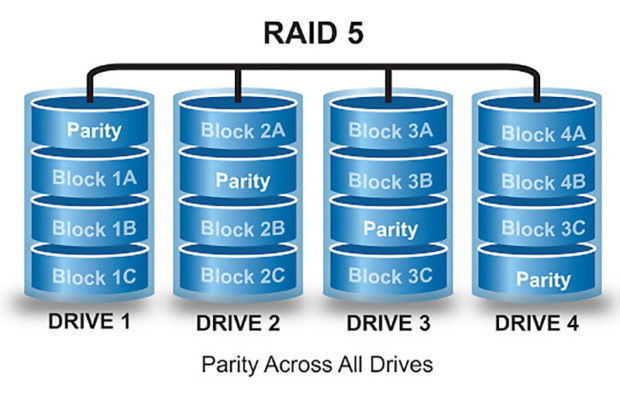Keep Your Cool at the IoT Edge

Autonomous vehicles generate a ton of data. In fact, a single autonomous test vehicle can generate between 5 and 20 TB of data per day. And while you might think that’s limited to autonomous vehicles, that amount of information is produced by jet engines, wind turbines, oil pumps, and automation systems as well.
What happens to all of that information? The autonomous vehicle data, for instance, is incredibly valuable to informing future vehicle designs, so it can’t just be discarded. But you obviously can’t pipe it over a wired connection to a data center where it can be stored, and transmitting that amount of data over a wireless network is expensive and impractical.
The only real option is to use a high-performance embedded computing (HPEC) data logger onboard the vehicle itself.
“You have to do it on the vehicle because you cannot transfer that amount of data via radio,” says Pierfrancesco Zuccato, a Senior Group Manager in the Product Management division at Eurotech S.p.A. “And this imposes a number of very demanding requirements because on a vehicle you have shock and vibe and have to comply with certain regulatory standards, but you don’t have much space.”
Limited space is a tricky proposition, not just for automotive engineers, but for designers of any system that requires a significant amount of performance. In use cases like the autonomous test vehicle, fans can’t be used to dissipate heat from the data logger because moving parts significantly reduce system reliability. And in many cases, these devices are positioned in the vehicle such that there’s little-to-no exposure to ambient air at all. They also often use as much energy as the compute devices themselves.
So how do you get HPEC storage into a space-constrained, harsh environment like an autonomous test vehicle? The answer is fluid.
“If you have liquid cooling, you can achieve a maximum level of density because you don’t need to leave room for anything to flow inside besides the liquid, which can be directed precisely to the parts that need it,” Zuccato says. “Through liquid cooling, you have an efficiency that is unmatched by air cooling.”
How do you get HPEC storage into a space-constrained, harsh environment like an autonomous test vehicle? Fluid.
@EurotechFan
A Liquid-Cooled Data Center
Liquid cooling has been used in a variety of systems for years. These include electric vehicles (EVs), which use the technology to keep batteries at optimal temperature, as well as airplanes that run fuel over onboard electronics so they do not overheat.
But EV and airplane thermal management systems are custom designed and incredibly costly to implement in a test system – or any other space-limited design that just wants to use a heavy-duty CPU, GPU, and/or FPGA for that matter. For this reason, edge systems engineers at Eurotech designed the DynaCOR 40-35, a rugged, liquid-cooled data logger with up to 123 TB of NVMe storage with data center-grade temperature control (Figure 1).

In the autonomous test vehicle setting, the DynaCOR 40-35 accepts coolant directly from the car and passes it over cold plates within the system. These cold plates are of course tightly coupled, which prevents liquid from disturbing any of the onboard electronic components and also aligns with the platform’s ISO 16750-3/LV-124-2 certification compliance.
The system’s 123 TB of soldered ECC NVMe storage are partitioned into five bays that support RAID 0 or RAID 5 architectures, the latter of which provides data resiliency by distributing logged information across multiple redundant drives. Even if a single drive fails in a RAID 5 system, parity information can be pieced together from other working drives to reconstruct the original data (Figure 2).

To support the constant stream of data coming from high-resolution automotive sensors, the DynaCOR 40-35 contains a Layer 3 switch, two 100 GbE, and four 10 GbE interfaces for a total throughput capacity of more than 200 Gbps. To effectively manage that firehose of data, the system is capable of sustained 80 Gbps write speeds to memory, allowing one DynaCOR 40-35 to serve as an enterprise-class storage cluster for all of the endpoints in a vehicle.
All of these components are liquid cooled, but the real reason the DynaCOR 40-35 requires liquid cooling is that they all need to be managed and the platform also has to analyze the data that it logs. This is performed by a 16-core Intel® Xeon® D-2100 Series processor, which integrates Intel® AVX-512 extensions and a fused multiply-add (FMA) block for computing arrays.
The Xeon processors come soldered to a motherboard, increasing their ruggedness and reliability in harsh-environment use cases. Despite that, the chips still provide enterprise-class features like Intel® Virtualization Technology (Intel® VT), Intel® QuickAssist Technology (Intel® QAT), and Platform Storage Extensions that help drive onboard storage capabilities.
These capabilities produce an overall thermal design power (TDP) as low as 60 watts, significantly lower than other GPU offerings. This low performance per watt (PPW) is an ideal complement to Zuccato’s vision of “reproducing the data center at the edge.”
“The fact that you can keep a very tight control over the operational conditions of your device means that you can deploy it not only in a vehicle but almost anywhere because you are effectively decoupling the thermal management requirements from the actual environmental conditions,” Zuccato explains. “And this means that you can even deploy data center hardware like the latest and greatest CPUs and other peripherals like GPUs or NVMe storage units in a way that matches the use conditions they were designed for.”
Off-the-Shelf HPEC
HPEC systems have been promoted for nearly a decade as a way to bring more intelligence to the edge. But many attempts have failed because of the inherent difficulty transplanting technologies designed for the controlled environment of a data center into the rugged conditions of the real world. Those that did succeed often needed so much customization that they weren’t realistic for the majority of applications.
Now, advanced technologies like HPEC and liquid cooling have progressed to the point that they are not only widely available but are available off the shelf. In fact, the DynaCOR 40-35 has a quick docking option that allows designers to quickly remove it from a test vehicle, extract their data in an office environment, and then drop it back in.
If that’s not the definition of high performance at the edge, I’m not sure what is.